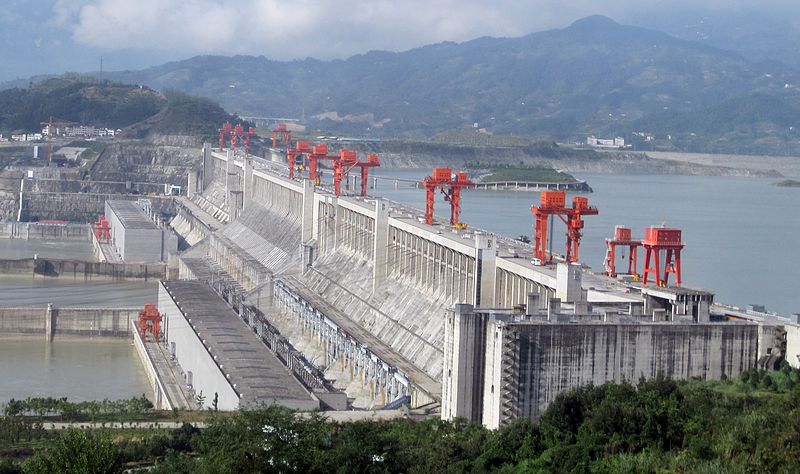
 Wikimedia Commons
Wikimedia Commons
Li Liguan lives at the outskirts of Loudi city in Hunan province. A former farmer, he was uprooted from his land to make way for a stadium. Now he tries to benefit from the construction boom by hauling bricks and renting out a room. His fate is typical for the hopes and injustices of China's development model.
The engine that transforms the lives of millions of Chinese citizens like Li Liguan is China Development Bank (CDB). The bank channels capital to key sectors and projects in the world's fastest growing economy -- an essential role in any development state. "Understand CDB and you understand the core of China's state capitalism," comment Henry Sanderson and Michael Forsythe, two financial journalists. In their new book, China's Superbank, they recount how the development bank has grown from a bureaucratic basket case to a global player in less than two decades.
Since its creation, CDB has funded political pet projects such as the Three Gorges Dam (pictured), the South-North Water Transfer Project, the Beijing Olympics and the Shanghai Expo. It has also financed every major Chinese policy initiative, from the massive economic stimulus in 2008 to the current rapid expansion of solar and wind farms.
CDB's biggest idea was devising a business plan for China's urban transformation. The bank allowed local governments, which were prohibited from taking up debt, to create special financing vehicles outside their budgets, and use land as collateral for CDB loans. As the bank invested in local businesses and infrastructure, including the stadium in Loudi, land values increased and local governments could take up more loans. This perpetual motion machine will work as long as China's real estate boom continues.
When the Chinese government encouraged its companies to go overseas, CDB stood ready to provide finance. It offered multi-billion dollar credits so state-owned enterprises could buy up foreign competitors, extended resource-backed loans to countries such as Venezuela and Ecuador, and funded infrastructure projects such as dams and highways.
In Ethiopia, for example, the bank's projects include the glitzy headquarters of the African Union and sugar factories which are linked to land grabs and the controversial Gibe III Dam. CDB is even backing a real estate project to develop 20,000 new homes in San Francisco. Through the China Africa Development Fund, it also invests in African industries and job creation.
CDB is today the world's largest development bank, overshadowing the World Bank and other international financiers. It still benefits from implicit state guarantees, but has entered commercial turf with ambitious private equity and securities arms. Western governments urged China to liberalize its banking sector in the 1990s. Nowadays they welcome investment from Chinese state banks to back their own struggling institutes.
While CDB boosted economic growth beyond expectation, the side effects of its development model have become evident. The land sales which fuel the bank's urban development plans are based on systematic expropriations from poor farmers. The city of Loudi for example sold the land it had seized from Li Liguan at 16 times the compensation rate which the farmer received. This is normal practice throughout China. Two thirds of all protests in China are caused by land conflicts, and continued urbanization may uproot some 60 million more farmers over the next two decades.
China is also reaching the ecological limits of growth. Its air and water have become public health risks, and critical ecosystems are rapidly degraded. With its relentless focus on steel and concrete, CDB has contributed to this crisis. Yet the bank has not developed concepts to integrate social and environmental aspects into its business model, and its environmental standards lag behind international best practice.
"If the Communist Party is God, CDB is its prophet," Sanderson and Forsythe conclude. Many cash-strapped governments in need of infrastructure will be happy to hear the bank's gospel. As it becomes the lender to the world, China's Superbank needs to address the challenges of its development model.
